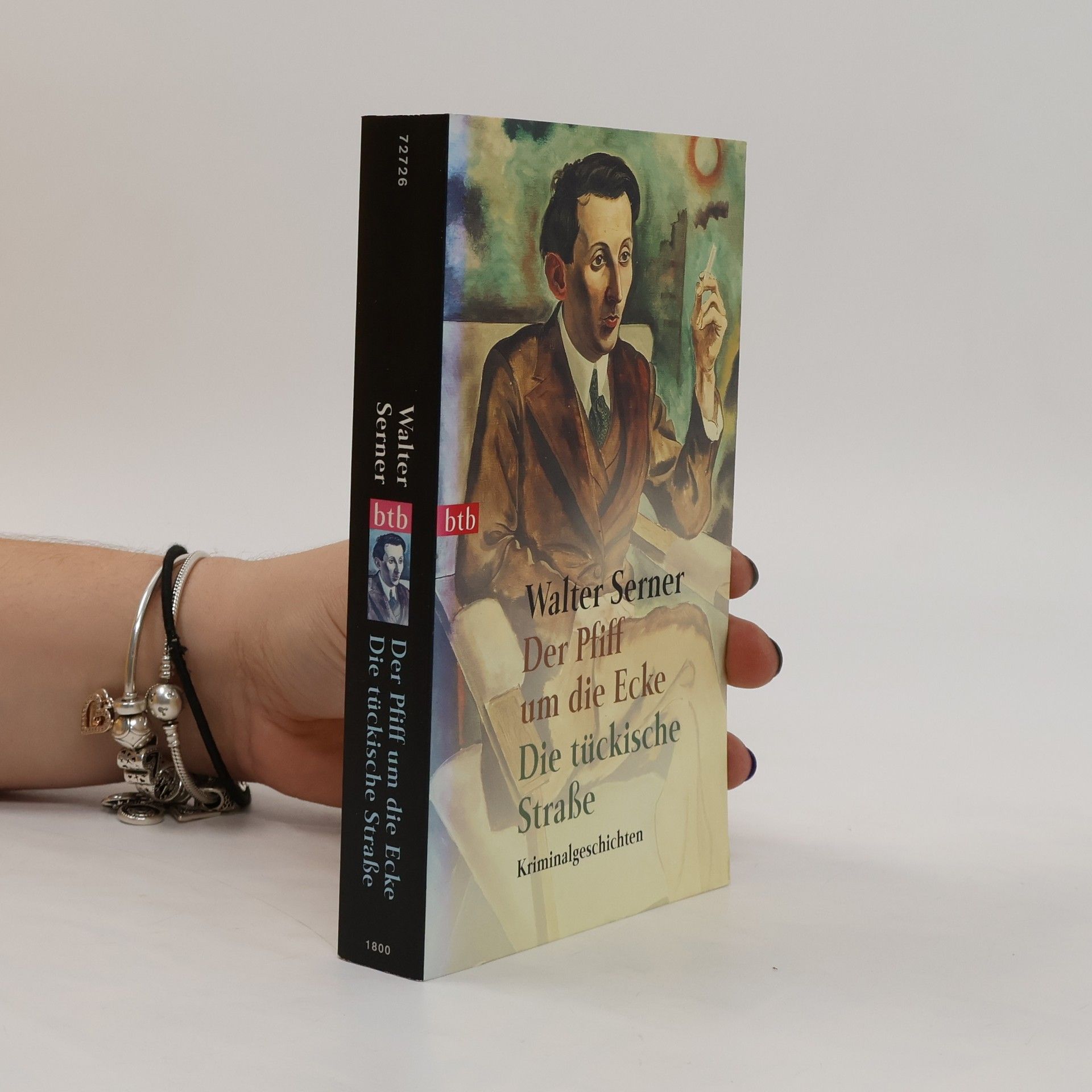Bichette si è guadagnata il soprannome di “Tigre” per la sua femminilità aggressiva e famelica, non priva di una buona dose di cinismo. A Parigi ormai la conoscono tutti, in particolare gli uomini, ma nessuno è mai riuscito a “catturarla” davvero, legandola a sé. Finché sulla scena non appare l’enigmatico Fec, amaro vagabondo della città, che sembra guardare la Tigre con occhi annoiati. Da questo incontro scaturisce un’avventura concitata e surreale che smaschera il “feticcio” dell’amore. Dandy e intellettuale alternativo, Walter Serner racconta la Parigi degli anni Venti, fotografandone le scene sordide e meravigliose con un linguaggio a volte così dialettale da divenire pura fantasia. Pubblicato nel 1925 e messo all’indice dal nazismo nel 1935, La tigre resta una delle più forti espressioni della letteratura dadaista e avanguardista del Novecento.
Walter Serner Libri
Walter Serner fu uno scrittore e una figura chiave del movimento Dada, noto per il suo approccio sperimentale alla letteratura. Le sue opere approfondiscono situazioni estreme e gli aspetti più oscuri della psiche umana, spesso con una critica pungente della società borghese. Lo stile di Serner è caratterizzato da audaci sperimentazioni linguistiche, strutture di frasi non convenzionali e un marcato distacco ironico. Attraverso la sua scrittura, mirava a smantellare le nozioni convenzionali di arte e realtà, provocando forti reazioni emotive nei suoi lettori.







The German contribution to the Dada movement, this collection brings together three texts, translated into English for the first time, which were essential for the very inception of the movement and which influenced its future development. Included is the only Dada novel, Tenderanda the Fantast, by the movement's founder, Hugo Ball.
At the Blue Monkey
- 192pagine
- 7 ore di lettura
"Walter Serner's first story collection, published in German in 1921, brought to narrative form the essential philosophy he espoused in his earlier Dada manifesto/handbook, Last Loosening: A Handbook for the Con Artist and Those Who Wish to Be One -- life is a con job and demands the skills of a swindler. With its depiction of a world of appearances, in which nothing can be trusted, At the Blue Monkey helped establish the ex-doctor and renounced Dadaist as a literary 'Maupaussant of crime.' This first English translation offers thirty-three stories of criminals, con artists, prostitutes, and gadabouts engaged in a variety of forms of financial insolvency, embezzlement, sexual hijinks, long and short cons, and dalliances with venereal diseases and drugs. With a mordant humor that renders the criminal code into something nearly occult, Serner describes a bevy of hoodlums, pimps, and swindlers utilizing a potpourri of European argot to disquieting effect, waging a secret war against anything crossing their paths -- especially in affairs of the ultimate confidence scheme, the heart. Told in a baroque, sometimes baffling poetry of underworld slang in an urban world of bars and rent-a-rooms where human animals are either on unsavory display or on the make, these short tales are presented like so many three-card Montes in which the reader may well be on the literary mark."--Back cover
Walter Serner, a notable figure in the Dada movement, shifted his focus to crime fiction after distancing himself from Dadaism. His 1925 novel, featuring a controversial setting and provocative language, sparked scandal but narrowly escaped censorship thanks to support from Alfred Döblin. His works often faced scrutiny, with some being temporarily seized. This collection includes a variety of stories, showcasing Serner's unique narrative style and themes, ranging from mysterious encounters to societal critiques, reflecting the vibrant yet tumultuous era of the 1920s.
Erotische Krimis (Vollständige Ausgaben)
- 120pagine
- 5 ore di lettura
Walter Serner, a notable figure in the Dada movement, transitioned to writing crime stories after distancing himself from Dadaism. His 1925 novel, featuring a scandalous narrative and provocative language, faced censorship threats but was saved by Alfred Döblin's endorsement. The collection includes various tales exploring themes of love, deception, and the complexities of human relationships, all set against a backdrop of vibrant European cities. Serner's works reflect his unique perspective on societal norms and the human condition, blending humor with sharp commentary.
Walter Serner gilt als Meister der verruchten Pose, des amoralischen Affronts. Das Generalthema seiner Kriminalgeschichten ist die Faszination des Bösen. In mondänem Argot feiert hier ein durch und durch moderner Autor das blühende Laster der Großstadt und deren zwielichtige Helden: leichte Mädchen und schwere Jungs, Tagediebe und Nachtschwärmer, Damen von Welt und solche mit Vergangenheit, Gentleman-Gauner, Schieber und Schlepper. Ein hochkarätiges Lesevergnügen nicht nur für Fans des Kultautors!
Verheißungsvoll beginnt Walter Serner seine Geschichten rund um allerhand Detektive, Spitzel und Hochstapler, und voller Pointen und überraschender Wendungen führt er sie zu einem verblüffenden Ende. Die Prosastücke dieses Buches funkeln vor Sprachlust und Erfindungsreichtum.

